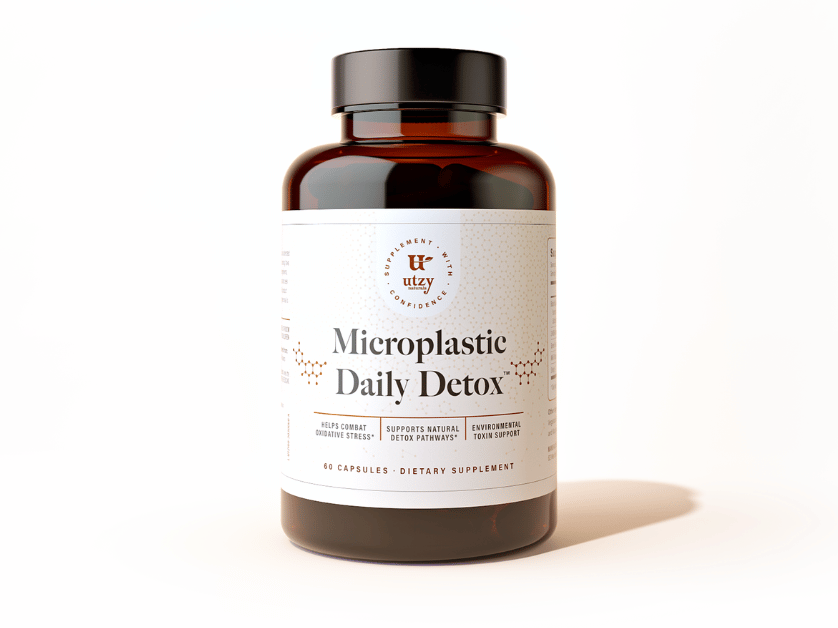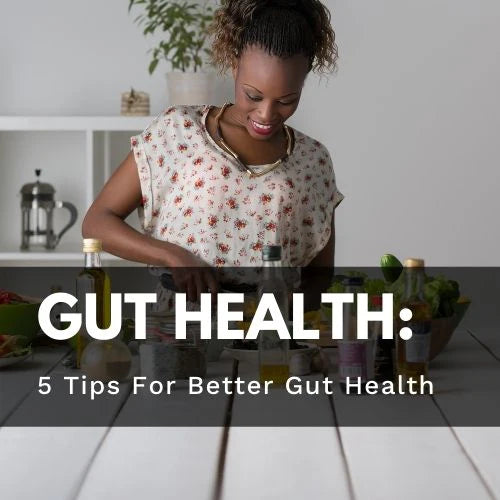Save up to 25% during our FRESH START Sale! SHOP NOW
Save up to 25% during our FRESH START Sale! SHOP NOW
shop
learn
How to Detox Microplastics from Your Body
August 19, 2025 3 min read
Microplastics are tiny plastic particles that have made their way into nearly every part of our environment.
They are found in the water we drink, the food we eat, and even the air we breathe.
While avoiding them entirely is not possible, there are practical steps you can take to reduce your exposure and support your body’s natural ability to process and eliminate toxins.
This guide explores what microplastics are, where they come from, and how you can lower your risk through diet, lifestyle, and targeted supplements.

What Are Microplastics?
Microplastics are plastic fragments smaller than 5 millimeters. They form when larger plastics break down or are manufactured intentionally as microbeads in certain products.
Common sources include:
-
Bottled water and other beverages stored in plastic
-
Processed and packaged foods
-
Seafood, especially shellfish
-
Airborne fibers from synthetic fabrics and household dust
-
Personal care products with microbeads
Because they are so widespread, scientists are studying how microplastics interact with the human body and what their long-term effects may be.
Can You Actually Detox Microplastics?
There is no single switch in the body that removes microplastics. However, your body does have systems designed to manage and eliminate a wide variety of toxins.
The liver, kidneys, gut, and skin all play key roles in this process.
By supporting these systems through diet and lifestyle, you can help reduce the overall burden on your body and improve resilience against environmental stressors, including microplastics.
Lifestyle Strategies to Reduce Exposure
The first step in detoxifying microplastics is to lower your daily exposure. Small adjustments can make a big difference over time.
Water: Choose filtration systems like carbon filters, reverse osmosis, or Berkey-style filters to reduce plastic particles in drinking water.
Food: Limit processed and packaged foods when possible and choose fresh produce and whole foods.
Cooking and Storage: Avoid microwaving food in plastic containers. Switch to glass, stainless steel, or ceramic storage options.
Air quality: Use HEPA or MERV-13 filters in your home to reduce airborne plastic fibers. Vacuum with a HEPA filter to lower household dust exposure.
Personal care: Look for skincare and household products that are free from microbeads and excess plastic packaging.
Supporting the Body’s Detox Pathways
Once exposure is minimized, focus on strengthening the systems your body relies on for detoxification.
Nutrition
-
Cruciferous vegetables such as broccoli, kale, and Brussels sprouts provide sulforaphane, a compound that activates detox enzymes in the liver.
-
High-fiber foods like oats, beans, and flaxseed support healthy digestion and elimination.
-
Adequate hydration helps the kidneys flush out toxins.
Lifestyle
-
Regular exercise and sweating support circulation and toxin elimination.
-
Sauna therapy may provide additional detox support.
Supplements
-
Microplastic Daily Detox: Formulated with sulforaphane from black kale extract, shilajit for mitochondrial support, Hobamine™ to balance oxidative stress, green tea extract, and milk thistle for liver health. This supplement supports the body’s natural detox pathways and helps reduce the burden of environmental toxins.
-
Other helpful nutrients include glutathione, vitamin C, and zinc, which assist with antioxidant defense.
Sample Daily Protocol for Detoxing Microplastics:
Here is a simple daily framework to help reduce exposure and support your body’s detox systems:
Morning
-
Drink a glass of filtered water.
-
Take Microplastic Daily Detox (3 capsules with breakfast).
Daytime
-
Eat whole foods rich in fiber and cruciferous vegetables.
-
Stay hydrated throughout the day.
Evening
-
Do light exercise or spend time in a sauna if available.
-
Store leftovers in glass or stainless steel rather than plastic.
The Bottom Line
Microplastics are unavoidable, but that does not mean you are powerless. By making simple adjustments to your diet, lifestyle, and supplement routine, you can reduce exposure and help your body function at its best.
Consistency is key. Supporting your natural detox pathways with daily habits and targeted supplementation can make a meaningful difference over time.

Dan Powers is the founder of Utzy Naturals, where he creates supplements to help people feel their best in today’s toxic, modern world. He’s passionate about simple, practical ways to live healthier and loves spending time with his family, gardening, and cooking.
Leave a comment
Comments will be approved before showing up.
Also in Health
Subscribe
Sign up to get the latest on sales, new releases and more …
Join the Utzy Naturals Club!
Sign up and get the latest on sales, new releases, and more...





